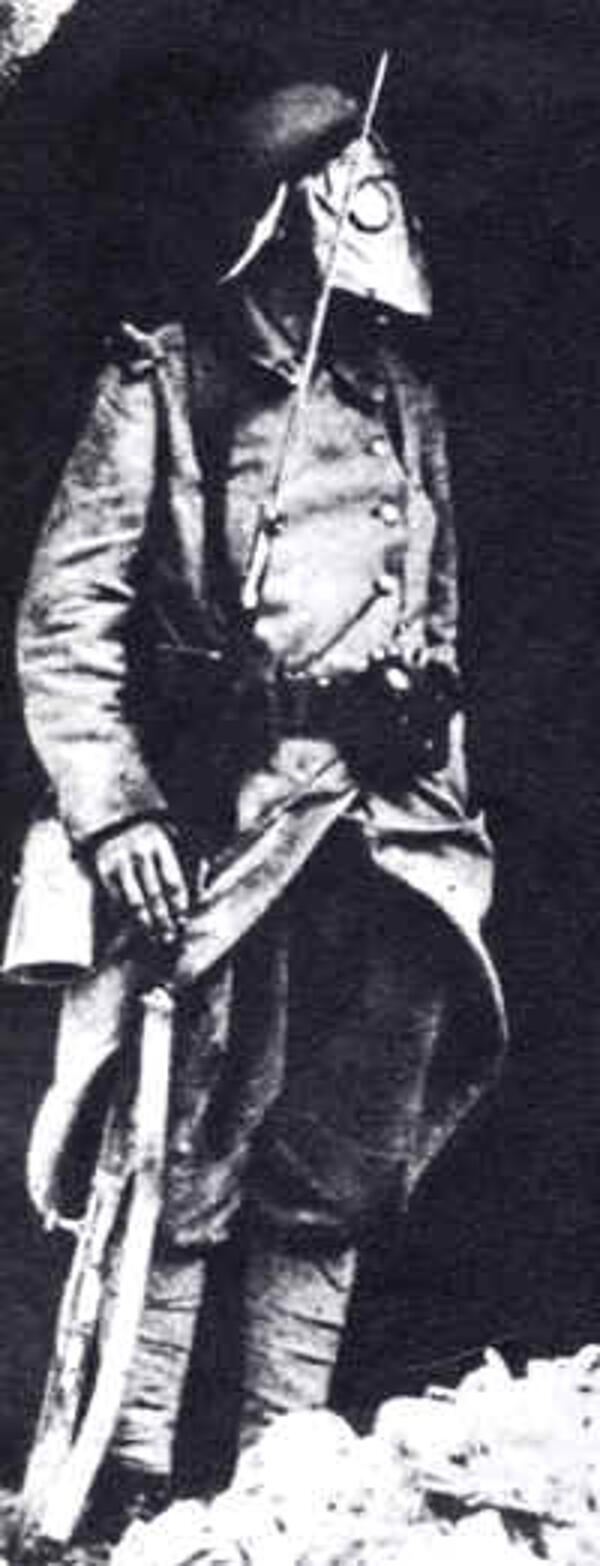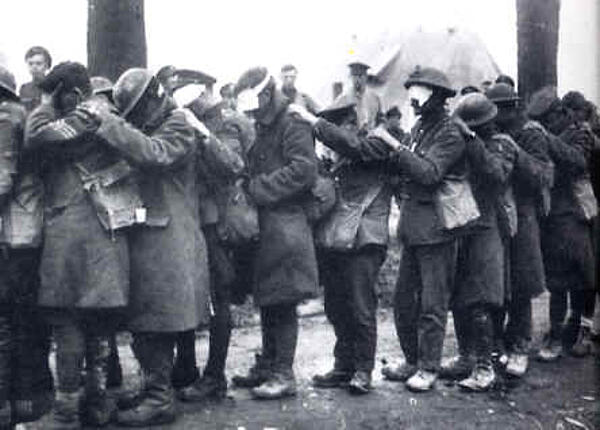Poison Gas and World War One
Of all the weapons used during World War One, poison gas was probably the most feared. Unlike infantry weapons and artillery, poison gas offered a silent means of attacking the enemy trenches even when there was no battle going on.
Poison gas also delivered a more painful death; while infantry weapons offered an instant or fast demise, the lack of or failure of gas masks could leave a victim in agony for days or even weeks before he eventually passed away.

Many assume that the first side to use gas during World War One was Germany. However, the first recorded gas attack was actually by the French. In August 1914, France used tear gas grenades containing xylyl bromide on the Germans. Although just an irritant rather than a deadly weapon, the tear gas did work in preventing Germany from advancing throughout Belgium and parts of France.
However, Germany had already begun its work on gas and in October 1914, the Germans attacked Neuve Chapelle by firing gas shells at the French. The chemical inside the shells prompted large sneezing fits and left them unable to defend themselves.
Once trench warfare took hold and the war lost its mobility, both sides began looking for other ways to boost their campaigns. One way military commanders planned to achieve this was to develop a gas weapon that was so devastating that it would impact not only the front line, but the ability of any other personnel to deal with the crisis that would ensue.
Poison gas (chlorine) was first used at the Second Battle of Ypres in April 1915. The first sign that the gas was deployed was when French sentries noticed a cloud of yellow-green moving towards them at around 17:00 hrs on 22nd April. The gas had been delivered by pressurised cylinders, which had been dug into the German front line between Steenstraat and Langemarck.
Initially, the French troops believed the gas to be a smoke screen that was being used to disguise the movements of German troops, and as a result the French soldiers were ordered to front line of their trench.
The impact of the chlorine was devastating, forcing French and Algerian troops to flee in terror. The confusion created the perfect opportunity for the Germans to capitalise but they too were so shocked by the success of the chlorine that they failed to follow up its success and advance into the Ypres salient.
Once the chlorine attack had taken place it gave the Allied nations the perfect excuse to retaliate with the same force. Britain became the first Allied nation to respond and in September 1915 the newly formed Special Gas Companies attacked the German troops at Loos. Replicating the use of gas cylinders, the Brits waited for the wind to change course and then released the gas, which drifted across enemy lines and was swiftly followed by a well-timed infantry attack. However, the wind did change direction at certain points along the front line, causing 2,000 British casualties and seven fatalities.
Eventually, developments in the use of gas as a weapon or “accessory” resulted in both phosgene and mustard gas being deployed. Phosgene was particularly potent, impacting on its victims in just 48 hours with very few symptoms to attract the attention of medics. Mustard gas - first used by the Germans in September 1917 - was much more obvious, causing both internal and external blisters within just hours of exposure. While only occasionally fatal, it was incredibly painful and left many men blind.

When gas became a more regular part of war, armies rapidly developed gas masks to provide their soldiers with protection provided they were sufficiently warned. Soldiers also used to make their own; cloth soaked in urine was supposed to be particularly effective against chlorine. By 1918, gas masks had become relatively sophisticated and were more readily available to soldiers on the Western Front.
By the end of the war, Germany had become the main user of poison gas, followed by France and then Britain. While a terrifying weapon, there is significant debate about the actual impact it had on the war; while it caused great terror, there were relatively few fatalities as a result of poison gas.
In total, the British Empire suffered 188,000 gas casualties but only 8,100 fatalities. Russia is believed to have suffered the most, with more than 50,000 fatalities, while France only had 8,000. In total, World War One resulted in around 1,250,00 has casualties but only 91,000 fatalities, with 50 per cent of these Russian. However, these figures do not account for those who died from their wounds and injuries after the war, or those who were permanently disabled.
MLA Citation/Reference
"Poison Gas and World War One". HistoryLearning.com. 2025. Web.
